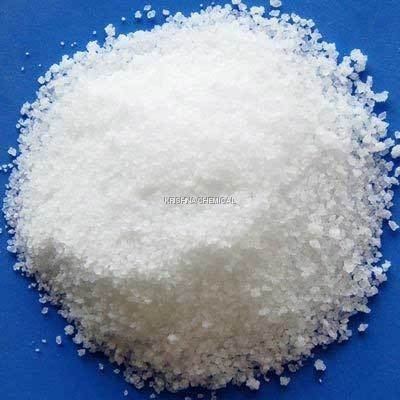Formula C6H10CaO4 Appearance White crystalline solid | Molar mass 186.2192 g/mol | |
 | ||
Calcium propanoate or calcium propionate has the formula Ca(C2H5COO)2. It is the calcium salt of propanoic acid.
Uses
As a food additive, it is listed as E number 282 in the Codex Alimentarius. Calcium propanoate is used as a preservative in a wide variety of products, including but not limited to: bread, other baked goods, processed meat, whey, and other dairy products. In agriculture, it is used, amongst other things, to prevent milk fever in cows and as a feed supplement Propanoates prevent microbes from producing the energy they need, like benzoates do. However, unlike benzoates, propanoates do not require an acidic environment.
Calcium propanoate is used in bakery products as a mold inhibitor, typically at 0.1-0.4% (though animal feed may contain up to 1%). Mold contamination is considered a serious problem amongst bakers, and conditions commonly found in baking present near-optimal conditions for mold growth.
A few decades ago, Bacillus mesentericus (rope), was a serious problem, but today's improved sanitary practices in the bakery, combined with rapid turnover of the finished product, have virtually eliminated this form of spoilage. Calcium propanoate and sodium propanoate are effective against both B. mesentericus rope and mold.
Metabolism of propanoate begins with its conversion to propionyl coenzyme A (propionyl-CoA), the usual first step in the metabolism of carboxylic acids. Since propanoic acid has three carbons, propionyl-CoA can directly enter neither beta oxidation nor the citric acid cycles. In most vertebrates, propionyl-CoA is carboxylated to D-methylmalonyl-CoA, which is isomerised to L-methylmalonyl-CoA. A vitamin B12-dependent enzyme catalyzes rearrangement of L-methylmalonyl-CoA to succinyl-CoA, which is an intermediate of the citric acid cycle and can be readily incorporated there.
When propanoic acid is infused directly into rodents' brains, it produces reversible behavior changes (e.g. hyperactivity, dystonia, social impairment, perseveration) and brain changes (e.g. innate neuroinflammation, glutathione depletion) that may be used as a model of human autism in rats.
According to the Pesticide Action Network North America, calcium propionate is slightly toxic. This rating is not uncommon for food products; vitamin C is also rated by the same standards as being slightly toxic. Calcium propanoate can be used as a fungicide on fruit.
